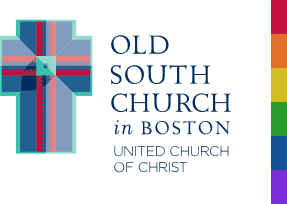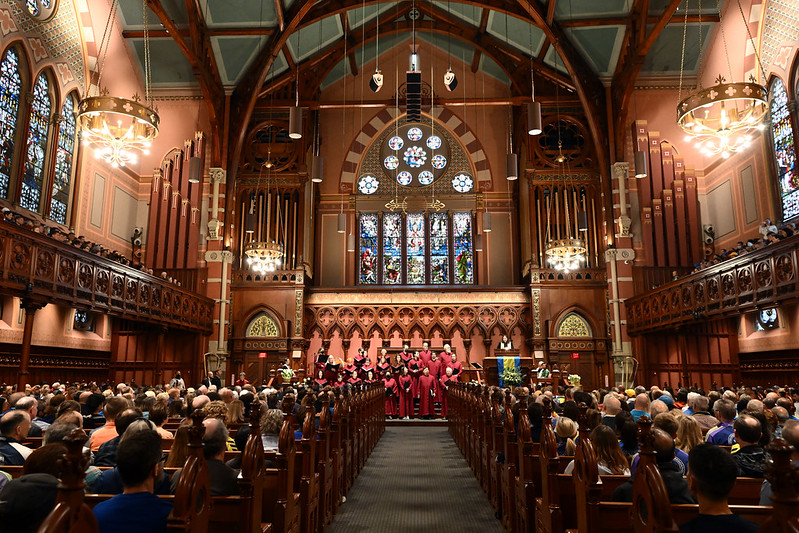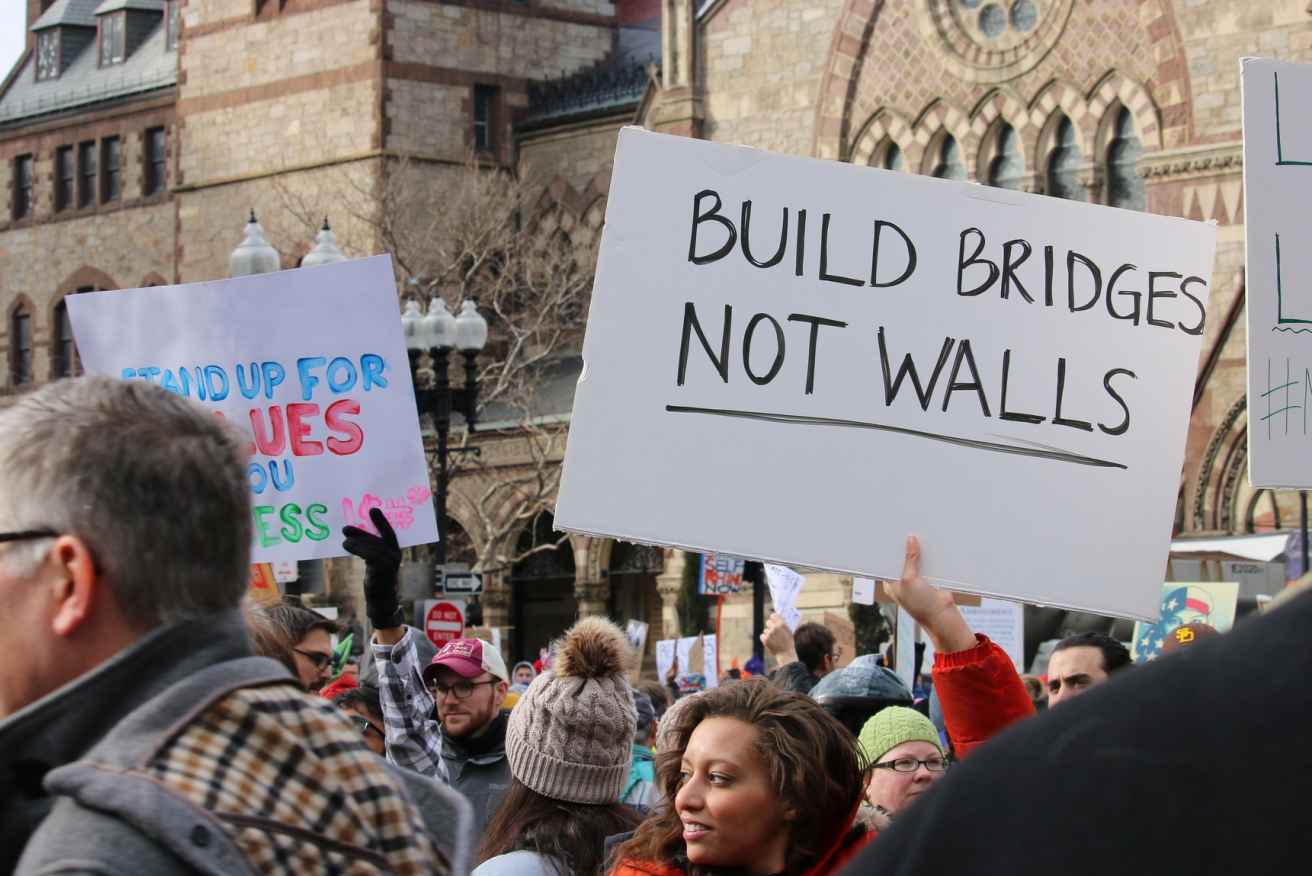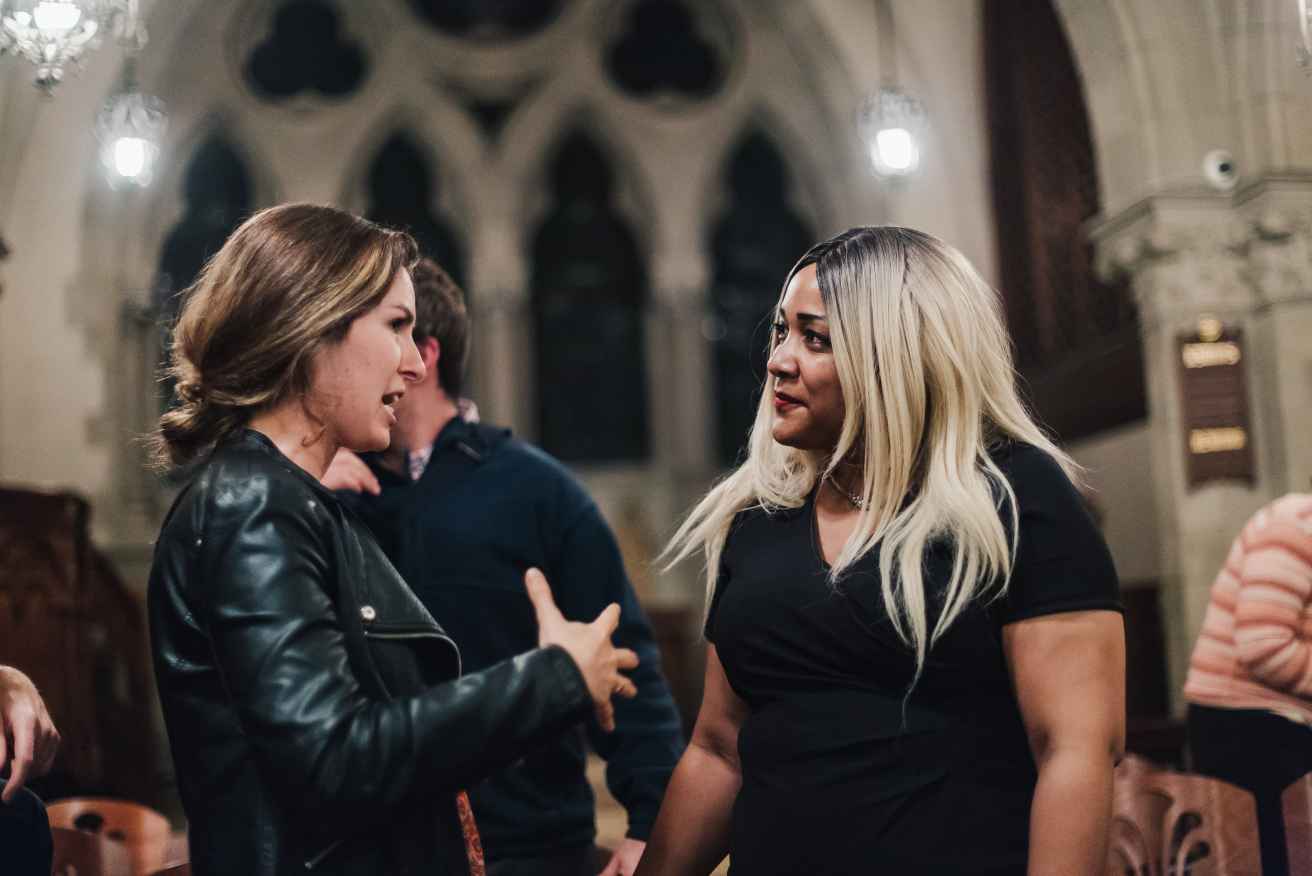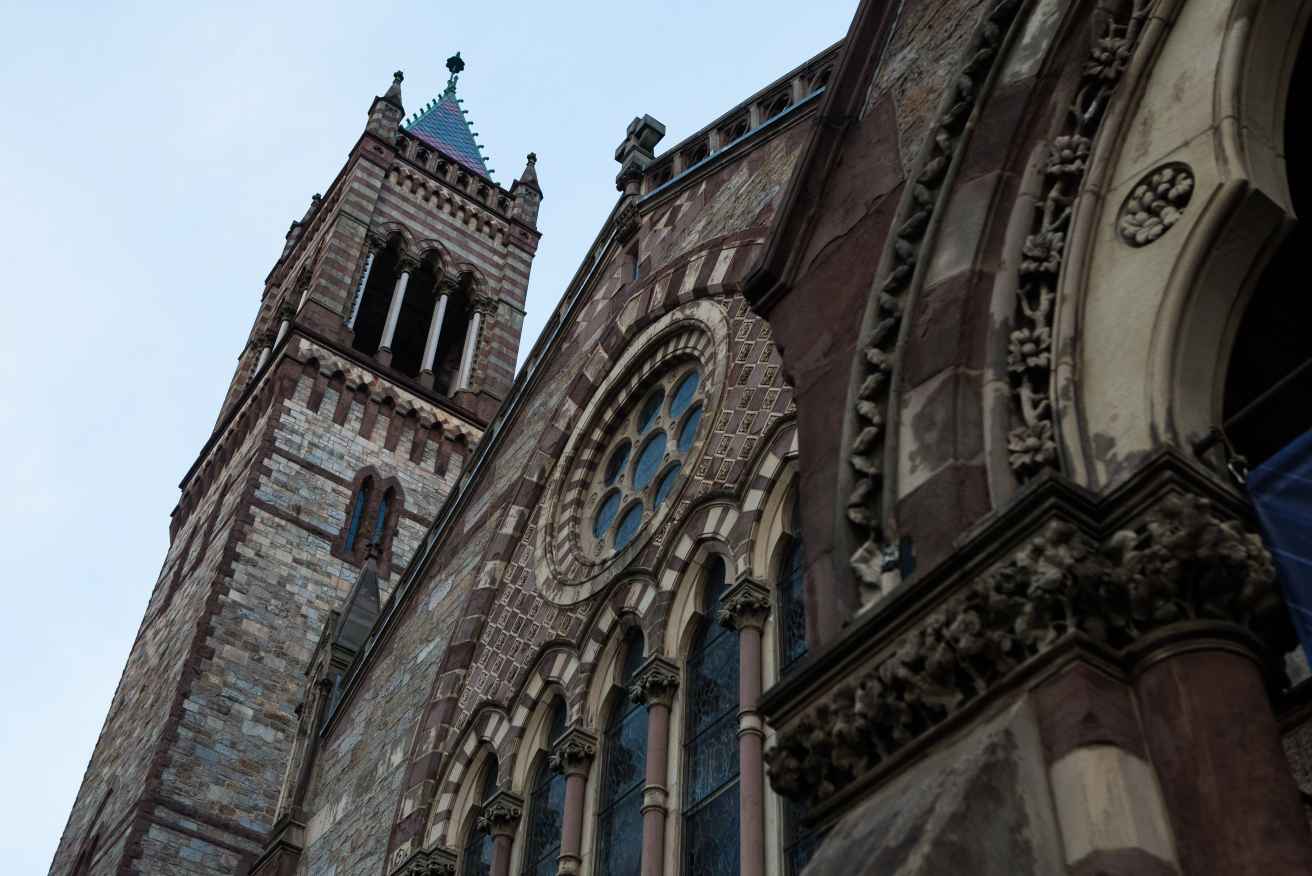Martin Luther King, Jr. Sunday
Martin Luther King, Jr. Sunday
Danger
The Christenson Cross is one of the compelling features of this sanctuary. It was dedicated in 1990 to the memory of a beloved minister of this church: Bob Christenson. Having served as the Associate Minister for ten years, in 1989 Bob died tragically at age 57 of cancer.
The artist who was commissioned to design the Cross, John McConnell, first wanted to get the size right. He built a cardboard model. When he brought it here, it looked wildly out of proportion, way too big. But when the model was hoisted up to hang from the rafters, it looked puny, laughable. . . dwarfed by the space around it.
McConnell went back to the drawing board. He made from cardboard a second model, this one larger -- taller and wider -- than the first. Again it looked ridiculously gigantic. . . oversized. . . until it was raised up. It was too small.
McConnell built from cardboard a third model cross. When he carried it into the sanctuary it seemed massive. But when this third model was raised up into place, it was terrific. Just right. Except for one thing: it was so enormous, so large and dense, it obscured the beautiful central window: The Announcement to the Shepherds.
McConnell went back to the drawing board. This time he maintained the size (the height and width) but he re-imagined the Cross in filigree: openwork or tracery. The worshipper would be able to look through the Cross to the window. Depending on the light and the angle, the Cross would come and go… its stylized representations of the plants and flowers that are found throughout the sanctuary, would appear and disappear, but they would never interfere with the great window.
I love the Christenson Cross. I love that it honors Bob Christenson. . . whom I never knew, but whose kindness and gentleness are legendary. I love the Cross’s design and the way it reflects the themes and patterns in the sanctuary. I love its ability to appear and disappear, to emerge and fade. I agree that its enormous size is just right.
But, here’s my problem, my question. It is not just mine. . . this unease I feel, this concern, hangs over the heads of all the clergy of Old South. We cannot help but wonder if there is something pointed about its position and placement.
I’ve studied the rafters above. There is no reason it could not have been hung a foot or two forwards, towards you, or backward, or a foot or two backwards towards the window. But there it is. . . our very own sword of Damocles.
I think there is something decidedly pointed about its placement and position. The Christian cross is a stark reminder of the dangers of discipleship.
Dr. King, whose birthday we pause to celebrate tomorrow, said about the cross that it is “God’s photograph.” (The Preacher King, p; 231, quote from a sermon preached at Ebenezer Baptist Church in 1968)
The man whose home was bombed, on whose front lawn his enemies burned a cross …
The father, whose wife and children were threatened, whose phones lines were tapped, whose mail was read. . .
The Baptist preacher who received death threats almost daily. . .
Who was arrested and jailed for non-violent demonstrations. . .
The Christian activist who said to his congregation that since they were Baptist, the fire hoses could only add to their acquaintance with deep water. . .
The pastor who, speaking of police canines, said that he’d been dog-bitten for no reason, so he might as well be dog-bitten for good reason, for justice, for civil rights. . .
The Bible scholar who was accused of being a communist because, God knows, his enemies -- though they declared themselves Christians -- did not know their Bibles. . .
Dr. King, who knew something about the costs of discipleship. . . he said this about the cross:
“I have learned that being a follower of Jesus Christ means taking up the cross” Dr. King said this: “My Bible tells me that Good Friday comes before Easter,” and this, “the cross is not a piece of jewelry you wear, but something you die on.”
Here is what I think, what I believe. I believe the cross is our holy ground. . . holy ground. . . like the holy ground Moses encountered in the wilderness. . . only more so.
Way before Martin Luther King. . . way before Jesus of Nazareth. . . Moses was out shepherding, looking after Jethro’s flocks. . . leading them to water and grazing land. . . protecting them from predators. . .
Way before Martin. . . way before Jesus. . . Moses was out in the wilderness when he came upon a burning bush. That’s the story. A burning bush. A bush burning, but not consumed. It got Moses’ attention and he stopped. He just stopped. He stopped shepherding. Who knows what ever happened to Jethro’s flock? Moses stopped shepherding and God starting talking. God was in that bush. And it was holy ground.
God told Moses then and there what it was that was on God’s heart. That’s what makes this story, this moment, this time, this place, this conversation, holy. God told Moses what was on God’s heart.
And what was on God’s heart were the cries, the moans, the pleas, the hurt, (if you are hearing echoes of Haiti, that’s just right), the hunger, the thirst, the suffering, the weariness, the fearfulness of a whole population -- men, women, children, elders.
Their suffering was on God’s heart ... because that’s who our God is.
But something else was on God’s heart as well: their liberation was on God’s heart. Their freedom was on God’s heart. Their dignity was on God’s heart. Their well-being was on God’s heart.
That’s what makes this story holy ground.
But there is something else about holy ground. . . something of which I need to warn you: the danger.
You see: to overcome the distance between suffering and freedom… to walk the way of God’s heart is to maneuver in dangerous terrain. . . booby-trapped terrain, territory covered with landmines.
Getting from here to there -- from despair to hope, from abject poverty to sufficiency, from oppression to liberation -- it’s dangerous work. . . its playing with fire …with things that can explode in your face.
Getting from slavery to freedom, from Egypt to the Promised Land, from segregation to integration, from discrimination to acceptance, from hate to love. . . inequality to equality, from hoarding to sharing. . . is perilous work. Because so much is at stake. Egypt’s entire way of life is at stake.
Egypt isn’t Egypt without slaves. Pharaoh isn’t Pharaoh without cheap, disposable labor.
God says to Moses: start walking. Walk across the Sinai. Walk down into Egypt. Walk over to Pharaoh’s palace. . . walk right up the stairs of the palace. Walk right into Pharaoh’s throne room and tell Pharaoh to free his cheap labor, his slave labor. . . you tell Pharaoh what is on my heart. . . you go tell Pharaoh, to let my people go.
All that walking and all that talking on behalf of God led to being chased by Pharaoh’s army, by horses and spears, arrows and chariots. Dangerous.
All that walking and all that talking on behalf of God led to fire hoses, angry dogs with strong jaws and large teeth, burning crosses, Molotov cocktails, arrests, jail, indignity, hate. . . a lot of hate, so much hate. Dangerous.
Dr. King -- who everyone said was a Moses figure -- said about the cross that it’s like the burning bush, it is holy ground, because Jesus is there. Because Jesus is there, God is there, and God’s heart is there.
The cross is God’s photograph. It is holy ground. Holy ground is dangerous because it is about things that matter deeply. . . things that are costly: justice, love, war, poverty.
If you know Dr. King primarily as an activist with a fire in his bell… than you wouldn’t know what I am about to tell you ... If you thought he was motivated by the essential goodness of humanity… you couldn’t know this…
If you assumed he was driven by a deep intellectual conviction about a universal moral law. . . how could you know this?
How could you know that his favorite hymn wasn’t “We Shall Overcome” or “We Shall Not Be Moved” or “Ain’t Gonna Let Nobody Turn Me Around” or “This Little Light of Mine” “Oh Freedom” or “Keep Your Eyes on the Prize.”
You’d need to know that King was a Christian, a preacher, a pastor, a disciple of Jesus to understand that his favorite hymn -- the one sung at his funeral, the one that gave him courage. . . courage to live near to the heart of God …to stand on holy ground, and march, and preach and speak, and pray and get arrested on holy ground -- was the hymn we will sing now.
It gave Martin Luther King the courage to live in danger, to live under the cross …because it is there that one gets very near to God.
May it do so for us …
_____________________
References:
A Testament of Hope: the Essential Writings and Speeches of Martin Luther King, Jr., ed. by James M. Washington, Harper San Francisco (1986)
The Preacher King: Martin Luther King, Jr. and the Word that Moved America, by Richard Lischer, Oxford University Press (1995)
